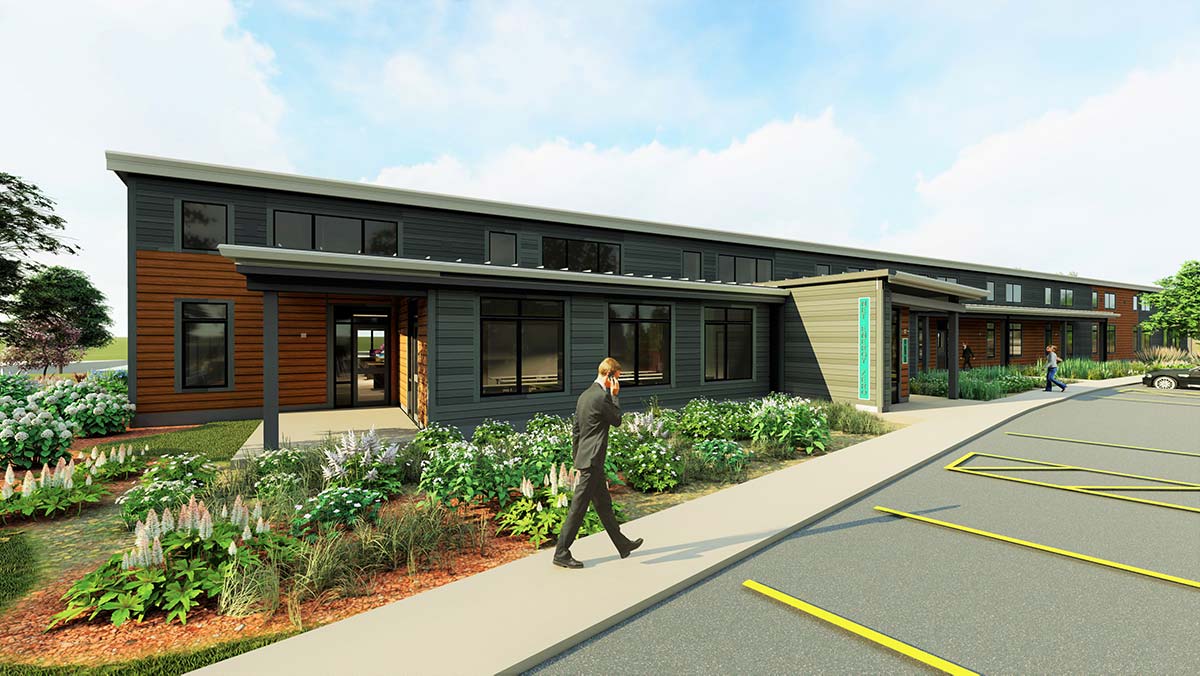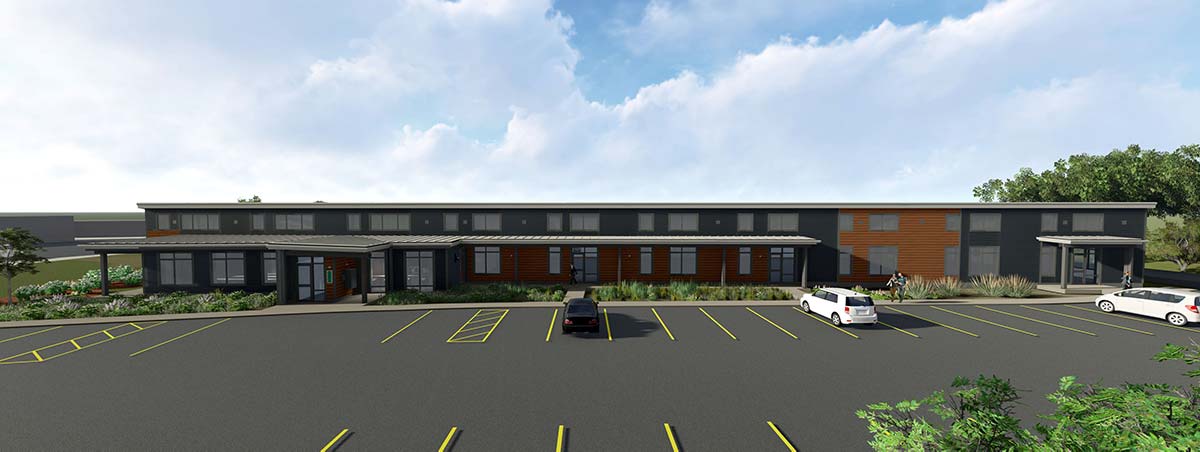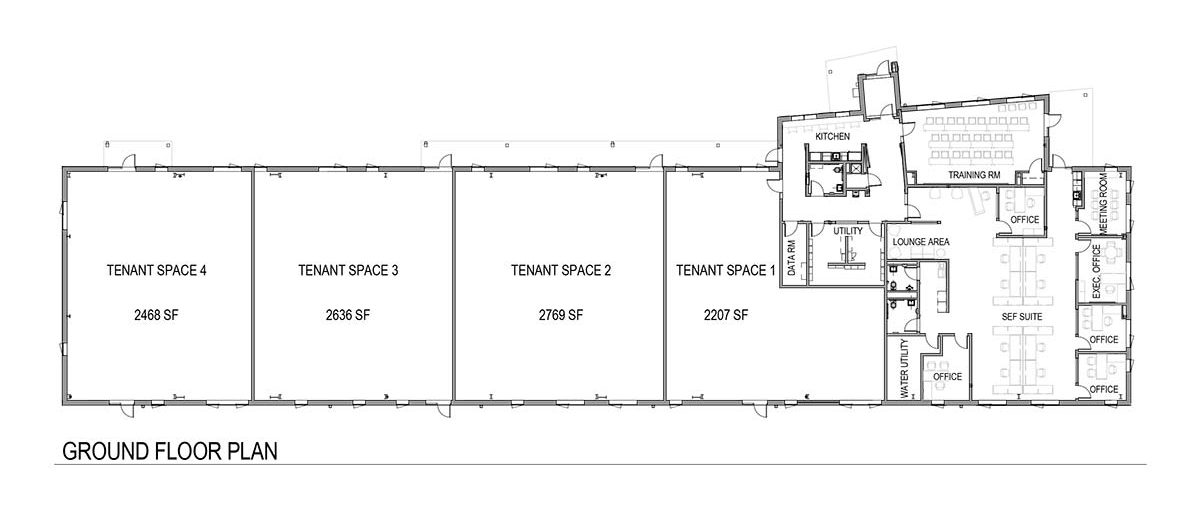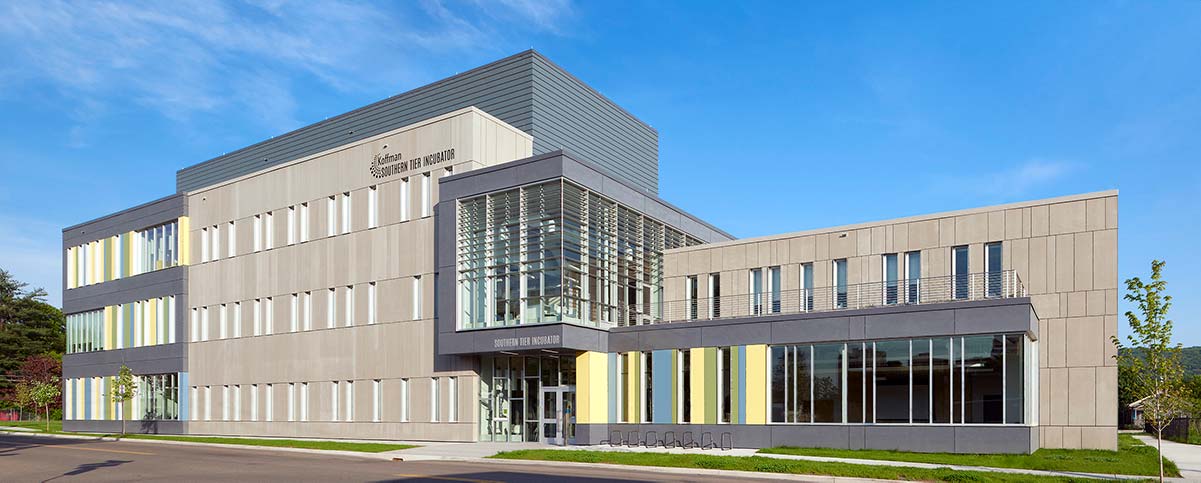
Andrew Schuster of Ashley McGraw is driving sustainability and net-zero projects in the Syracuse-based firm. [Photo: Courtesy of Ashley McGraw]
Andrew Schuster, hometown-hero principal at Ashley McGraw, spotlights four sustainable standouts.
Ever since his days as a Cornell undergrad, Andrew Schuster, now a principal architect at Ashley McGraw (AM) and leader of the firm’s civic, community, and housing focus—knew sustainability would drive his practice. As part of a capstone project, he helped build a net-zero home that was displayed on the National Mall along with other colleges’ entries.
“That was a formative experience … When you’re doing something that has such a huge material and energy input on the world, using good practices to reduce that impact—and make that impact more thoughtful—is kind of a no-brainer,” Schuster says. After briefly working abroad post-college, he found his way back to his Syracuse hometown, where, at AM, he’s helping steer the firm from predominantly educational architecture to an all-encompassing focus. Here are four notable projects that illustrate that breadth of vision.

[Photo: John Griebsch Photography]
1. Onondaga Nation Fire Station
This near-net-zero, ground-up fire station, built for the local Onondaga Nation’s volunteer fire department, is literally filled to the roof with sustainable features—cellulose insulation, solar panels, geothermal heating and cooling, floods of natural light, and almost no plastics—all of which perfectly dovetail with the tribe’s own core-deep belief in environmental stewardship. (Chiefs think seven generations forward when making decisions.)
It also doubles as a community center for the nation, and, with weeklong generator capabilities, can even be used as temporary hospital shelter in the event of emergency. And its neighborhood-friendly, pitched-roof style looks great, too. “There’s really no trade-off between beauty and sustainable practices,” Schuster says.


[Photos: John Griebsch Photography]
FIRST FLOOR PLAN

[Drawing: Courtesy of Ashley McGraw]

[Photo: John Griebsch Photography]
Project: Onondaga Nation Fire Station Location: Nedrow, New York Completion: June 2015 Size: 12,000 square feet MEP Engineer: IPD Engineering Structural Engineer: St. Germain & Aupperle Consulting Engineers General Contractor: Onondaga Nation Landscape Architect: Environmental Design & Research

[Rendering: Courtesy of Ashley McGraw]
2. Sustainable Energy Fund Office Building
This future headquarters for the Sustainable Energy Fund, a Lehigh County nonprofit that advocates for sustainable project funding, will look pretty much like any garden-variety, single-story suburban office building—which is precisely the point. The goal is a net-zero office design that can be built within the local range of standard Class A office construction costs and also be replicated on a broader scale.
“We used no exotic building systems,” Schuster says. “There are pre-engineered frames, conventional wall and roof systems, no geothermal wells.” But thanks to features like a photovoltaic roof, optimal solar orientation, and energy-efficient building systems, the building will run energy-positive, producing 30% more energy than it uses, according to Schuster. A partnership with TN Ward Company, the building will also serve as an example to state regulators in the push to better expand “how building owners can be compensated for energy generation.”

[Rendering: Courtesy of Ashley McGraw]

[Drawing: Courtesy of Ashley McGraw]
Project: Sustainable Energy Fund Office Building Location: Schnecksville, Pennsylvania Completion: Anticipated late 2019 Size: 15,000 square feet MEP Engineer: AKF Group/In Posse Civil Engineer: Eberly & Associates Structural/Civil Engineer: Barry Isett & Associates Contractor: TN Ward Company

[Photo: John Griebsch Photography]
3. MacArthur Elementary School
The old cliche about crisis synonymizing with opportunity rings true with this innovative LEED Platinum project. After MacArthur was destroyed by Hurricane Irene, Ashley McGraw raised the rebuilt building above the floodplain and added play areas underneath, so the building would remain protected from flooding and kids can still play even if it rains.
Lighting controls, geothermal heat pumps, and radiant concrete floors help the school hit a super-low 10 Energy Use Intensity, and the bluestone or naturally rot-resistant black locust wood that clads the exterior is all local to the area. The design was the product of months of listening sessions and workshops with community members—and the kids themselves.
There’s even a voice-controlled animated interface, dubbed Arthur, that allows the children to inquire about that day’s energy usage. “It’s one of the coolest schools I’ve ever been in—and we do a lot of schools,” Schuster says.


[Photos: John Griebsch Photography]
SCHOOL SITE PLAN

[Drawing: Courtesy of Ashley McGraw]

[Photo: John Griebsch Photography]
Project: MacArthur Elementary School Location: Binghamton, New York Completion: January 2016 Size: 129,000 square feet MEP/Structural Engineer: Buro Happold Civil Engineer: Hulbert Engineering and Land Surveying Energy Modeling: Pathfinder Engineers Contractor: Hulbert Engineering and Land Surveying Landscape Architect: Appel Osborne Landscape Architecture

[Photo: David Lamb Photography]
4. Koffman Southern Tier Incubator
This workspace brings together a series of wet and dry labs, high-bay facilities, and research spaces where high-tech startups can find the resources they need to launch. Schuster makes special note of the layout design—the circulation spaces intersect so as to maximize tenant interaction—and two standout sustainability details: an “aspirated wall” along the south base with metal panels that harness the heat of the sunlight and dramatically decrease reliance on mechanical systems, and fibrous insulation instead of foam. That alternative provides quality vapor and moisture buffering at a much lower carbon footprint.
“Foam also has a lot of persistent organic pollutants and bioaccumulative toxins that are bad for the people who work on these things as well as the long-term environment,” adds Schuster.


[Photos: David Lamb Photography]
FIRST FLOOR PLAN

[Drawing: Courtesy of Ashley McGraw]
Project: Koffmann Southern Tier Incubator Location: Binghamton, New York Completion: May 2017 Size: 35,000 square feet Consulting Engineer: Jacobs Consultancy MEP Engineer: Pathfinder Engineers Structural Engineer: Ravi Engineering Landscape and Civil Engineer: M.J. Engineering General Contractor: Fahs Construction Group
